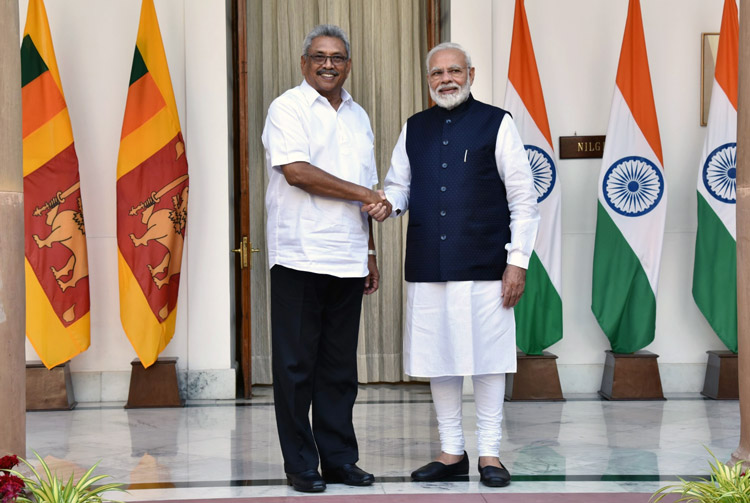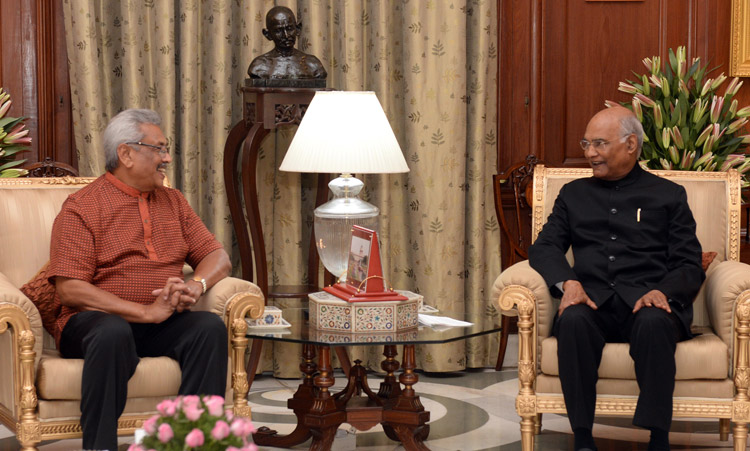INDIAN ARMED FORCES CHIEFS ON OUR RELENTLESS AND FOCUSED PUBLISHING EFFORTS

The insightful articles, inspiring narrations and analytical perspectives presented by the Editorial Team, establish an alluring connect with the reader. My compliments and best wishes to SP Guide Publications.

"Over the past 60 years, the growth of SP Guide Publications has mirrored the rising stature of Indian Navy. Its well-researched and informative magazines on Defence and Aerospace sector have served to shape an educated opinion of our military personnel, policy makers and the public alike. I wish SP's Publication team continued success, fair winds and following seas in all future endeavour!"

Since, its inception in 1964, SP Guide Publications has consistently demonstrated commitment to high-quality journalism in the aerospace and defence sectors, earning a well-deserved reputation as Asia's largest media house in this domain. I wish SP Guide Publications continued success in its pursuit of excellence.
- MoD initiates comprehensive review of Defence Acquisition Procedure 2020, pushes for defence reforms
- G7: The Swansong
- Kalinga Connect: South Asia to Polynesia
- Advanced MRSAM for India for a greater firepower
- Must Credit DRDO for Operation Sindoor, now what is next for defence R&D?
- Operation Sindoor | Day 2 DGMOs Briefing
- Operation Sindoor: Resolute yet Restrained
Visit of Sri Lankan President
 |
The Author is Former Director General of Information Systems and A Special Forces Veteran, Indian Army |

The two-day state visit of Sri Lanka President Gotabaya Rajapaksa to India commencing November 29, his first foreign visit after assuming presidency, has signaled a new beginning, contours of which will unfold in coming months. External Affairs Minister S. Jaishankar flying to Colombo immediately after Gotabaya’s victory on November 18 to personally meet him and extend formal invitation on behalf of Prime Minister Narendra Modi to visit India was an excellent diplomatic initiative. Gotabaya won the presidency with 52 per cent votes and in wake of the Easter Sunday bombings with Rajapaksa brothers accusing the Sirisena government for ignoring Indian intelligence reports warning that terror strikes by ISIS-motivated Islamic radicals were imminent. At the same time, Gotabaya’s win has caused serious misgivings amongst Tamil and Muslim minorities in Sri Lanka.
Sri Lanka has a crucial role in the security of the sea lanes of the Indian Ocean and Chinese influence remained cause of concern with the Rajapaksa brothers widely regarded pro-China. Mahinda Rajapaksa permitted Chinese submarines to berth in Colombo while Gotabaya was in the defence ministry. Hambantota port landed in Beijing’s lap for 99 years having been awarded USD 1.4 billion land reclamation (Colombo Port project being part of Beijing’s Belt and Road Initiative) to China Harbour Engineering Company, which had a detrimental impact on India’s national security. Mahinda Rajapaksa is now appointed Prime Minister with defence, finance and trade portfolios which Beijing would love to exploit. However Gotabaya in a recent interview to Indian media has stressed that the 99-year lease (of Hambantota) may impact Sri Lanka’s future and the government must retain “control of all strategically important projects like Hambantota. After all, these are not like hotel or a terminal, but to give control of a port or an airport or our harbours is different.” During his visit to India, President Gotabaya had wide ranging talks with PM Modi covering the entire expanse of bilateral ties. Modi said that a stable Sri Lanka was interest of India and the entire Indian Ocean Region. With respect to Tamils in Sri Lanka, Modi said he was confident President Gotabaya Rajapaksa's government would fulfill aspirations of the community.
Counter terrorism was high on agenda of the two leaders with both discussing mutual security and further strengthening cooperation against terrorism. With Sri Lankan police officers already receiving counter-terrorism training in India, Incidentally the 7th edition of Exercise ‘Mitra Shakti- 2019’ aimed at enhancing interoperability and operational efficiency between the armies of India and Sri Lanka when deployed as part of UN peacekeeping forces commenced at Aundh in Pune in on December 2. Modi announced a special Line of Credit of USD 50 million dollars to Sri Lanka for combating terrorism. Both Modi and Rajapaksa resolved to work towards strengthening multi-dimensional partnership. In addition to the USD 50 million line of credit to fight terror, Modi announced another line of credit of USD 400 million for development projects in Sri Lanka. Modi said, “The $400 million line of credit to Sri Lanka will strengthen the country’s infrastructure development. I am confident that this will help boost Sri Lanka’s economy and the line of credit will also speed up mutually beneficial `project cooperation’ between the two nations.”

India had already given financial assistance to Sri Lanka assured to build houses under the India Housing Project for the Tamil community in Sri Lanka. So far, 46,000 houses have been built under this housing project started by the Government of India. Now with an additional 14,000 houses are being built for people of Tamil origin. Apart from this, India has also decided to give a loan of $ 100 million for the solar project. Gotabaya announced steps to hand back all the Indian boats in Sri Lanka’s possession to India. President Gotabaya Rajapaksa told PM Modi that no “third force” will be allowed to impede the progress in bilateral relations between India and Sri Lanka. Significantly, this has been mirrored in the statement made by Prime Minister Mahinda Rajapaksa that he would work with his Indian counterpart Narendra Modi for peace and prosperity for both countries and the region. Gotabaya said, "During my tenure as President, I want to take Sri Lanka-India relationship to a higher level. The two countries have a long-standing friendship. We need to work together for economic development and security of our people." Gotabaya no doubt is decisive going by his credentials but to what extent he will be able to renegotiate the 99 years lease to China, if at all, only time will tell. President Rodrigo Duterte of Philippines too had taken a tough stance against Beijing but ended up falling to Chinese machinations. Sri Lanka’s submission to China was under shadow of the western pressure of human rights violations of massacring some 40,000 Tamils and China’s economic clout. India is crucial to assuaging Tamil sentiments in Sri Lanka and the bubble of China’s economic prowess appears bursting with no one but three Chinese banks going bust – one to the tune of USD 40 trillion. Gotabaya, therefore, can stand up to China, especially after exposure of how China has literally subsumed Australia. Massive Chinese involvement in construction projects in Colombo is prominently visible today, as also are the business venture in Kandy and elsewhere.
Inability of countries to repay loans for Chinese construction of roads, bridges, ports, mines, dams and other projects, to take over control of them is part of the ‘Debt Trap’ policy of Beijing across Asia and Africa. Chinese mega-projects have added to rising debt of Sri Lanka and raised concerns about excessive economic and political leverage. China has invested an estimated $11 billion in Sri Lanka, around $8 billion in the form of loans related to Xi’s BRI initiative to boost trade and transport links across Asia. Gotabaya’s visit to China should indicate how Beijing plans to deal with Sri Lanka. Gotabaya has stated he wants investments, and unless other countries fulfill Colombo’s need, it would be difficult to resist China’s offers. Therefore, India’s economic engagement with Sri Lanka must have top priority.
India must: deliver quality projects in time; boost investments in Sri Lanka also encouraging private corporate; accelerate joint India-Japan agreement for developing East Container Terminal at Colombo harbour; negotiate finalisation of offer to operate Mattala Airport, and; garner US and other countries support for investing in Sri Lanka and provide alternative to China’s BRI. India-Sri Lanka relations are important for the geostrategic environment of the Indian Ocean Region and both countries need to nurture them well.





